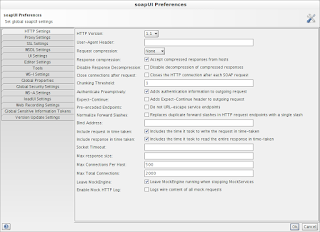The simplest possible way to simulate a backend service delay
When testing service integrations, we usually want to simulate the delayed responses from backend web services. For example, if you want to test how WSO2 ESB or Apache Synapse reacts when the backend service takes large amount of time for responding, there are many approaches to introduce delay to backend web service. I have observed that, most of the people modify the backend web services to add Thread.sleep() when they need to introduce a delay in service invocation.
If you are not testing the backend web service and just want to test the integration (e.g:- outgoing calls from ESB), I cannot think of a better solution than using soapUI mock services.
Add the following groovy script inside the OnRequest Script editor to introduce 1 minute delay.
sleep(60000)
Now, send a request to the mock service. You will notice that all requests will respond back to the caller after 1 minute of delay.
Read chapter 6 (Web service simulation with soapUI) and 11 (Extending soapUI with Scripting) of Web Services Testing with soapUI book for more information about soapUI scripting capabilities.
If you are not testing the backend web service and just want to test the integration (e.g:- outgoing calls from ESB), I cannot think of a better solution than using soapUI mock services.
Step 1
Add a new mock service to soapUI project. This can be done at the time of creating the project or by selecting a particular interface (binding) of a wsdl based project.
Step 2
Select the mock service in soapUI navigator and open the mock service editor. In the mock service editor, select OnRequest script.
Step 3
Add the following groovy script inside the OnRequest Script editor to introduce 1 minute delay.
sleep(60000)
Now, send a request to the mock service. You will notice that all requests will respond back to the caller after 1 minute of delay.
Read chapter 6 (Web service simulation with soapUI) and 11 (Extending soapUI with Scripting) of Web Services Testing with soapUI book for more information about soapUI scripting capabilities.



Comments